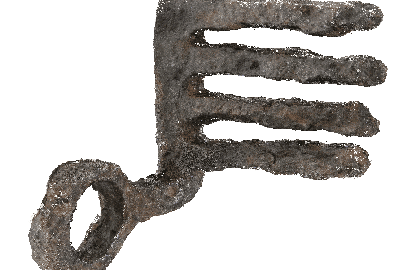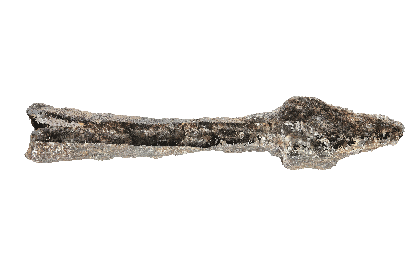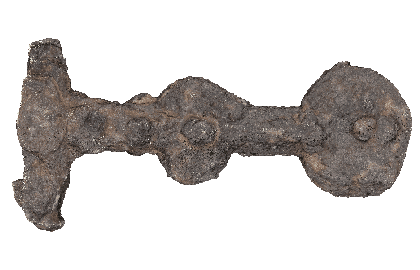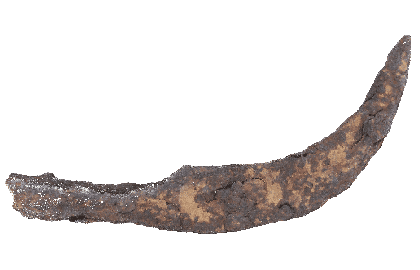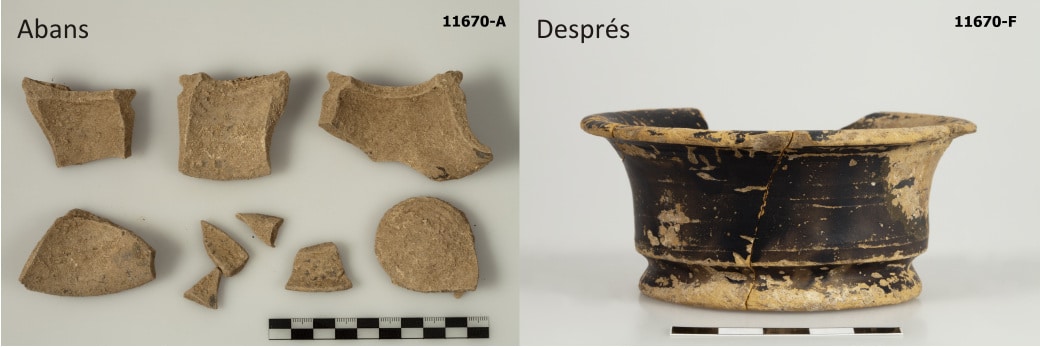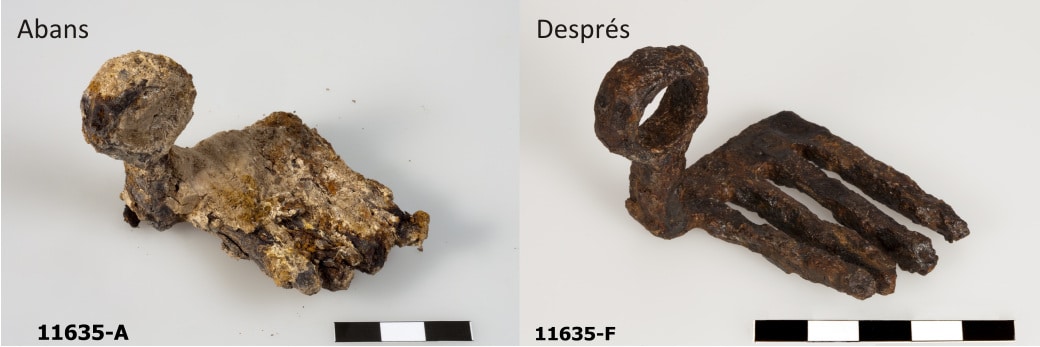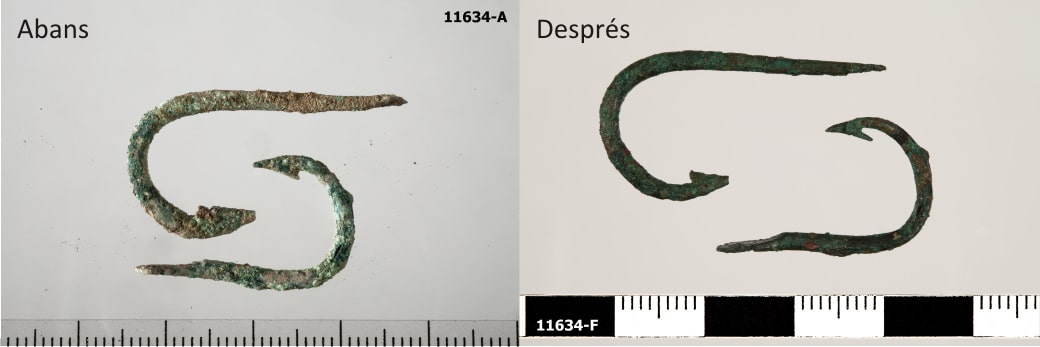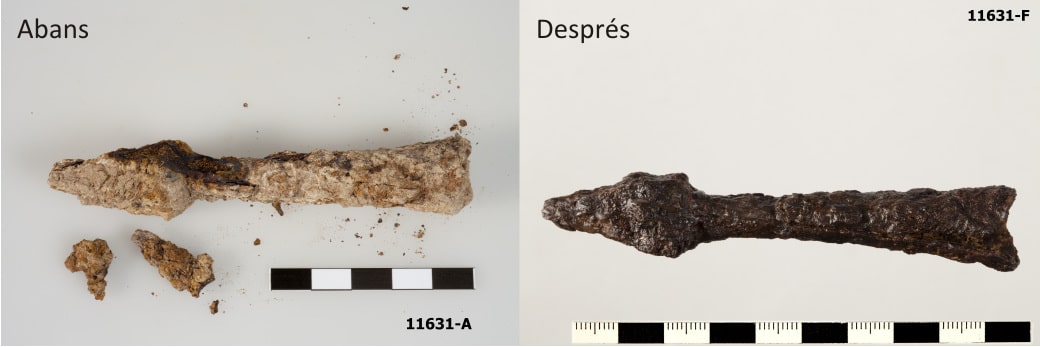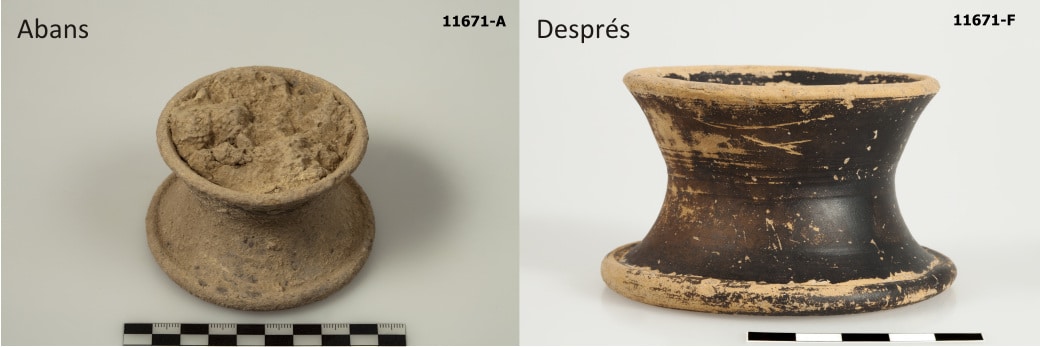Inventory number: PC10-2005-516
Name of the object: door key
Material: metal, iron
Type: daily use object
Dimensions: length (from the spikes to the outer part of the handle): 5 cm. length (from the spikes to the inner part of the handle): 4,7 cm. Irregular thickness (of the spikes): de 0,4 a 0,6 cm. Thickness (of the square handle): 0,7 x 1,2 cm. diametre of the ring: outer: 2,4 cm; inner: 1,5 cm.
Chronology: Roman Late Republic
Survey: july 2010
Provenance: sector 2
Description: Door key with four teeth, a short handle and a bow. Some of the teeth are slightly at an angle, which could have been caused in ancient times or due to the weight of the earth. The bow is large enough to carry it on one finger.
